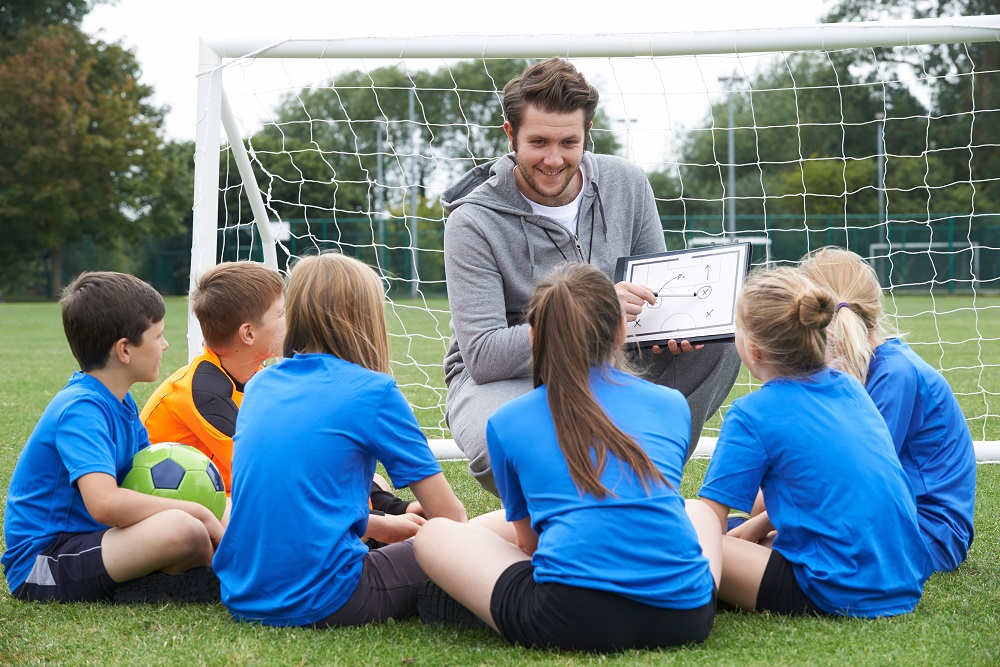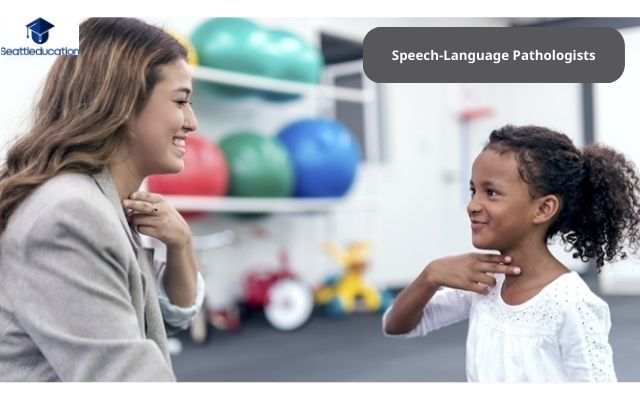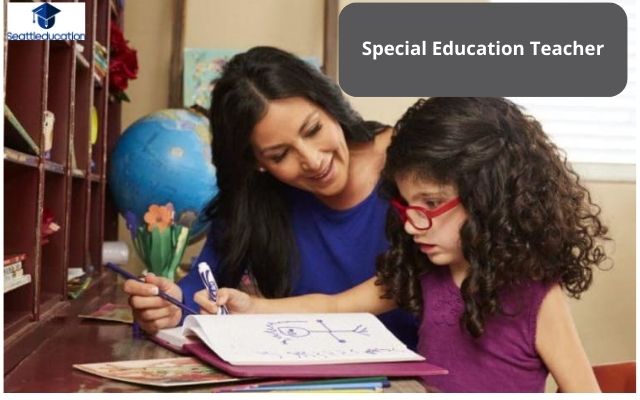Become A PE Teacher: Qualifications & Requirements For PE
Being a physical education (PE) teacher is an incredibly rewarding career. It allows you to share your love of physical activity with students and help them learn how to stay active throughout their lives.
With the right qualifications, anyone can become a PE teacher and make a difference in the lives of children. In this article, we’ll explore what it takes to become a PE teacher, from researching programs and degrees to understanding job requirements.
We’ll also look at the importance of creating an effective curriculum and utilizing technology in the classroom. If you’re ready to embark on your journey as a PE teacher, read on!
Understanding The Basics Of Becoming A PE Teacher
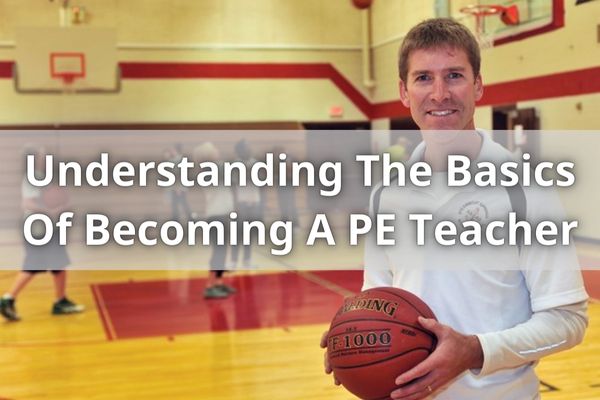
If you’re interested in physical education, understanding the basics is an important first step in pursuing a career as an educator.
Becoming a physical education teacher may require completing a PE teacher preparation program or earning a degree related to physical education. Depending on the state, there may also be specific teacher requirements such as passing pe teacher certification exams and completing student teaching hours.
Teacher salaries vary depending on school district and size of the city or town. It’s also important to research different programs and degrees available for physical education teachers, including any specialized courses that could help differentiate yourself from other candidates.
For example, some universities offer classes focused on coaching special populations like athletes with disabilities or long-term health conditions. Additionally, many colleges and universities provide scholarships specifically for those looking to pursue a career in physical education teaching.
When researching programs and degrees related to becoming a PE teacher, it’s important to consider factors such as cost of tuition, length of program completion time, availability of online classes, job placement rates after graduation, internships offered by the university and any other relevant information helpful in making your decision.
Moving forward with this knowledge will help guide your next steps towards achieving your goal of becoming a PE teacher.
Researching Programs and Degrees
You’ll want to research the different programs and degrees available to help you on your journey towards becoming a physical education instructor.
A great way to start is by looking into pedagogy, kinesiology, exercise science, bachelor of science in education (BSEd), and postbaccalaureate programs. Generally speaking, pedagogy is a type of teaching that focuses on the philosophical principles of instruction while kinesiology looks at the scientific study of human movement.
Exercise science deals with understanding and improving physical performance while BSEd provides an opportunity to gain qualifications in teaching physical education. Finally, postbaccalaureate programs provide further qualifications if you already have a bachelor’s degree but are not yet certified as a teacher.
It’s important for you to understand what each program entails before making any decisions so take some time to read up on each one and find out which best suits your needs.
You can also talk to someone who has gone through the process or speak with an academic advisor at a college near you for more information about how these degrees can help prepare you become a PE teacher. Additionally, there are plenty of online resources that discuss various topics related to becoming a physical education instructor such as job outlooks or estimated salaries after graduation.
After researching the different options available it’s important that you analyze your career goals against all the facts gathered from your research so far.
Once you’ve identified what type of degree could be beneficial for the career path ahead of you then it’s time move forward in taking steps towards reaching this goal!
Analyzing Your Career Goals
Now that you know what programs and degrees are available, it’s time to analyze your career goals and decide which one is right for you! Before beginning the process of becoming a PE teacher, it’s important to understand the various types of teacher jobs in physical education. Physical education teachers must be competent in areas such as sport skills, motor development, exercise physiology and sport psychology. Additionally, school teachers need to have strong interpersonal communication skills since they will be working with students on a daily basis.
| Teacher Job | Competency | Job Outlook |
| Sport Skills | Coaching & Teaching Techniques | Good Prospects for Growth |
| Motor Development & Exercise Physiology | Proper Form & Technique of Movements | Increase Demand for Special Education Teachers |
| Sport Psychology & Interpersonal Communication Skills | Understanding Students Needs & Wants | More Opportunities in Private Sector Schools & Universities |
It’s also important to consider salary and job outlook when analyzing your career goals. Generally speaking, physical education teachers have good prospects for growth due to an increase demand for special education teachers. Moreover, there are more opportunities in private sector schools and universities if you’re looking to work outside of public institutions.
All things considered, making sure that your competencies line up with the type of job you’re pursuing is essential when deciding which degree or program best fits your needs. With this knowledge securely tucked away in the back of your mind, you’ll be able to move forward confidently into obtaining a degree in physical education.
Obtaining a Degree in Physical Education
With the career goals and job outlook in mind, it’s time to start obtaining a degree in physical education! A bachelor’s degree is typically the minimum requirement for becoming a PE teacher.
This means that you will need to complete at least four years of college or university studies. Depending on your interest, you can pursue a degree in physical education and health, sports management, kinesiology, exercise science or another related field.
Teachers educate students on various topics and help them develop important skills needed for life. In order to be successful as a PE teacher, teachers typically need to have an in-depth knowledge of the subject matter they are teaching.
They must also understand how physical activities can benefit people’s overall physical and mental health. Additionally, teachers should possess strong communication skills as well as leadership abilities so they can effectively manage their classroom environment and inspire their students to reach their full potentials.
To become an effective PE teacher requires more than just a degree – it requires dedication and commitment to the profession.
It’s important to understand what type of training is necessary before entering this field so that you can adequately prepare yourself for the challenges ahead. With this knowledge under your belt, you will be one step closer towards achieving your goal of becoming a PE teacher.
Completing a Teacher Preparation Program
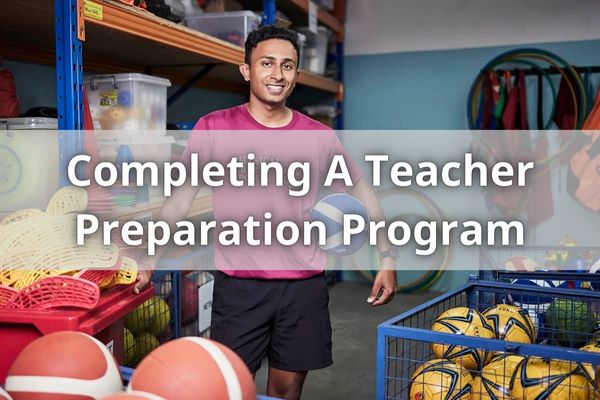
After obtaining your degree in physical education, the next step to becoming a qualified PE teacher is completing a teacher preparation program.
This program prepares you with all the skills necessary to teach physical education and provides you with teaching certification. Teacher preparation programs focus on curriculum development, assessment strategies, and classroom management techniques.
They also include instruction on how teachers instruct students on physical fitness activities. Programs often have clinical experiences or student teaching components as well that give prospective PE teachers hands-on practice in working with students.
Completing a successful teacher preparation program is essential for future PE teachers because it helps them acquire the knowledge and understanding of best practices for teaching physical education, as well as providing them with an opportunity to demonstrate their capabilities in front of administrators and other educational staff members.
In addition, having this formal training can be beneficial when applying for positions since many employers prefer candidates who have completed an approved teacher preparation program prior to entering the field.
The completion of a teacher preparation program sets up aspiring PE teachers for success since they will possess both theoretical and practical experience in physical education instruction prior to beginning their career.
With these qualifications, individuals are ready to move on to meeting licensing requirements so they can become certified professionals in the field of physical education.
Meeting Licensing Requirements
After completing a teacher preparation program, the next step for aspiring physical education professionals is to meet licensing requirements in order to certify their expertise.
It is important to research and understand the certification and different requirements for physical education teachers in one’s state before attempting this process. Most states require that students pass either a subject area examination or a comprehensive assessment such as the Praxis exam in order to become certified teachers. In some cases additional tests may be needed depending on local regulations.
In many areas, applicants must also complete background checks and fingerprinting as part of the certification process. Furthermore, prospective PE teachers should be aware that they will need to renew their teaching certificate periodically once it has been granted by their state’s department of education. This could involve taking continuing education courses or obtaining professional development credits from approved organizations or activities.
Finally, those seeking certification should make sure they have all of the necessary documents such as proof of completion of an accredited teacher preparation program and official transcripts from any college coursework completed prior to submitting an application for licensure with their local department of education.
With these steps complete, PE educators can move forward in advancing their careers by gaining experience in the field.
Gaining Experience in the Field
Once licensure is obtained, aspiring physical education professionals can begin the exciting process of gaining experience in the field.
Teaching physical education in a school or other educational setting is an excellent way to gain hands-on experience and develop skills related to proper health and fitness. Teachers can work with students on developing proper form and technique during activities while also focusing on the importance of living a healthy lifestyle. Additionally, teachers can help coach school sports teams and assist with conditioning drills that will help athletes improve their performance and reach their goals.
Pursuing additional certifications or credentials related to physical education is another great way for aspiring educators to gain more knowledge about the field. Participating in professional development opportunities such as workshops, conferences, or online courses are all ways to learn how to become a certified teacher and more about teaching methods and strategies while also networking with industry professionals who have similar interests.
Additionally, volunteer coaching at youth sports leagues outside of school can provide valuable insight into how physical education instruction applies in different settings outside of the classroom.
Gaining experience in physical education allows aspiring professionals to hone their skillset before taking on official positions within educational institutions. This preparation provides a strong foundation for individuals looking to become successful PE teachers by helping them understand best practices related to teaching methods, safety protocols, fitness assessments, and much more.
With this information under their belt, future PE teachers are equipped with the necessary tools they need to succeed in finding an appropriate educational setting where they can make an impact on student achievement through physical activity initiatives.
Finding an Appropriate Educational Setting
You can start your journey to becoming a physical education professional by finding an appropriate educational setting that aligns with your skills and interests. This could include teaching in a school setting, where you could lead students in team sports, individual sports, physical health activities, or health sciences classes. You may also consider working in special education settings, where you can help develop tailored curricula for students with unique needs.
No matter the setting you choose to pursue, it’s important to gain experience in the field that will allow you to demonstrate your knowledge and build relationships with colleagues and students alike. Here are some ways that can help:
- Observe experienced PE teachers who have successfully implemented their own curriculum.
- Participate in internships or volunteer programs at local schools or organizations.
- Attend workshops and seminars related to physical education topics such as teamwork and leadership development.
- Join professional associations related to physical education and health sciences fields so that you can network with other professionals in the industry.
- Utilize online resources such as webinars and forums for further learning opportunities.
By gaining experience through observation, participation, networking, and continued learning opportunities, you’ll be better prepared for any educational setting you find yourself in when pursuing a PE teaching career.
With these experiences under your belt, you’ll be well on your way toward creating an effective curriculum for any classroom environment.
Creating An Effective Curriculum

Now that I have identified an appropriate educational setting to become a PE Teacher, it is time to create an effective curriculum. As a sports teacher, it is my responsibility to ensure that students are not only learning the necessary physical activities and sports knowledge but also developing the skills they need for living healthy. To do this, I will incorporate physical development, team and individual sports, theories in sports pedagogy, exercise-based learning, and healthy lifestyles into my classroom instruction.
| Physical Development | Team & Individual Sports | Theories in Sports Pedagogy | Exercise-Based Learning | Healthy Lifestyles |
| Muscular Strength/Endurance Training | Soccer | Character Education | Group Fitness Activities | Nutrition Education |
| Flexibility Training | Basketball | Personal Fitness Planning | Yoga Practice | Goal Setting & Self-Regulation |
| Cardiovascular Conditioning | Baseball | Instructional Strategies | Body Weight Exercises | Stress Management |
I will use these five topics as the framework of my curriculum by incorporating them into both small group or whole class activities. For example, during cardiovascular conditioning sessions with larger groups of students I can teach basic soccer techniques while focusing on character education principles such as fair play and teamwork.
Smaller groups can participate in yoga practice while learning about personal fitness planning goals or body weight exercises with instruction on nutrition education. Finally, stress management strategies can be discussed while playing team sports including baseball or basketball while teaching goal setting and self-regulation strategies within each game.
With this comprehensive approach to teaching physical education classes within any educational setting, I am confident that all students will gain knowledge about healthy behaviors for now and later life stages. Moving forward with creating an effective curriculum for PE teachers might requires utilizing technology in the classroom…
Utilizing Technology in the Classroom
Utilizing technology in the classroom can help PE teachers revolutionize their teaching methods and engage students like never before! Technology such as interactive whiteboards, tablets, and computers can be used to enhance physical activities and exercise-based learning.
It can also be used to demonstrate athletic training drills, provide real-time feedback on performance, access data on individual student progress, and offer a platform for group collaboration. Indeed.com has an extensive list of job requirements for PE teachers, which include planning lessons that use technology to teach physical education skills.
Technology provides an opportunity for PE teachers to create engaging lesson plans with multimedia elements such as videos, audio clips, and animations. This not only helps students learn more effectively but also makes it easier for teachers to assess their understanding of the material.
Technology can also enable teachers to introduce new games or activities into the curriculum without having to worry about the costs associated with purchasing equipment or hiring outside personnel. Finally, using technology in physical education classes allows students to work at their own pace and feel more comfortable expressing themselves within a safe environment.
By implementing various forms of technology into physical education courses, PE teachers are able to create dynamic learning experiences that challenge students while still being enjoyable and relevant. Moreover, this type of active learning encourages creativity among all participants, which ultimately leads to better educational outcomes overall.
Understanding The Job Requirements Of A PE Teacher
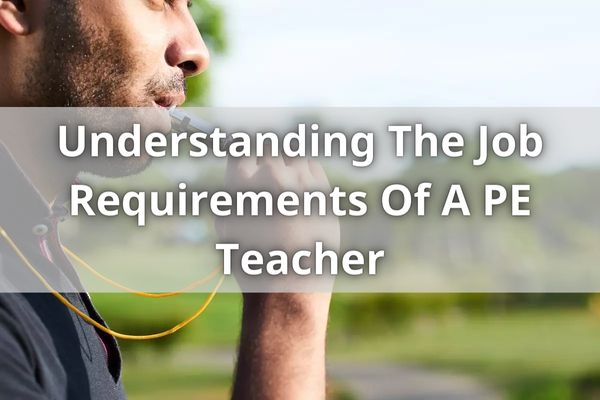
As a PE teacher, you’ll have the opportunity to design exciting and innovative lessons that use technology to help students learn physical education skills. Becoming a PE teacher requires dedication and knowledge of activities related to physical education, but it can be very rewarding.
To become a physical education teacher, you need to earn a degree in an education-related field. According to the Occupational Employment Statistics (OES), the average salary for many PE teachers in 2019 was nearly $60,000 annually. In addition to educational qualifications, there are other additional requirements that must be met when becoming a PE teacher.
First, general education courses such as mathematics and science are necessary for most states’ teaching license requirements. Secondly, many schools require their teachers to have completed CPR/First Aid certification classes as well as additional fitness or health-related certifications like yoga or Pilates instructor training.
Finally, all applicants must pass background checks and demonstrate good communication skills when interacting with children and parents alike. Overall, understanding what is required of PE teachers is an important part of pursuing this career path; however having the necessary qualifications does not guarantee success in this role since passion for physical activity and pedagogy play an equally important role in being successful.
With dedication and hard work, anyone who meets these criteria has the potential to become an effective PE teacher.
Conclusion
I’m now ready to become a PE teacher. After researching the requirements and deciding on a degree program, I completed my education and teacher preparation program. I’ve gained valuable insight into creating an effective curriculum, utilizing technology in the classroom, and understanding job responsibilities.
Now it’s time for me to put this knowledge into action! I’m excited to find an appropriate educational setting and start teaching physical education classes. With dedication and hard work, I know that I can make a positive difference in the lives of my students.

